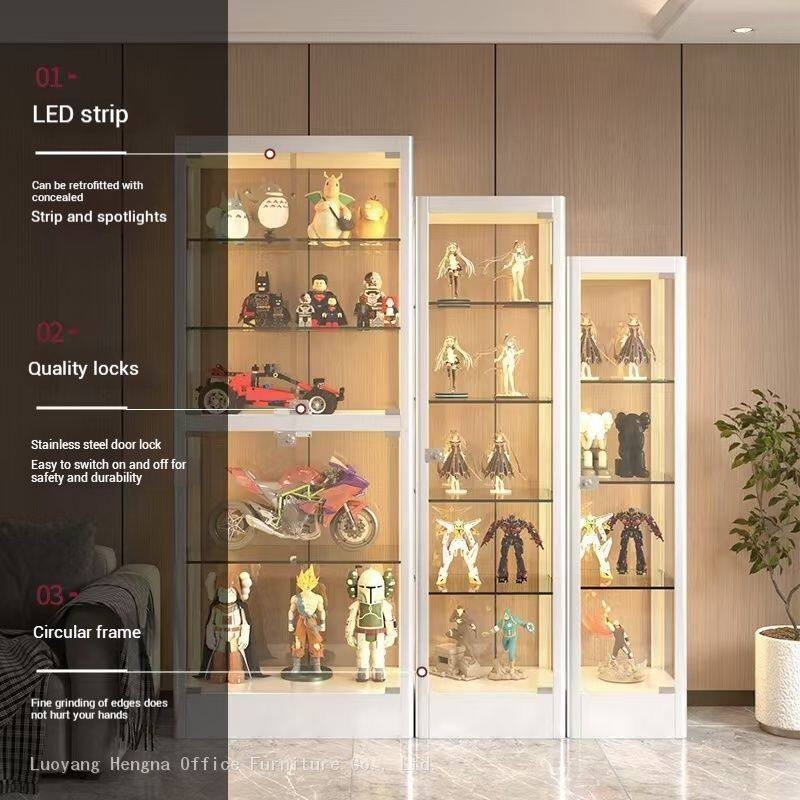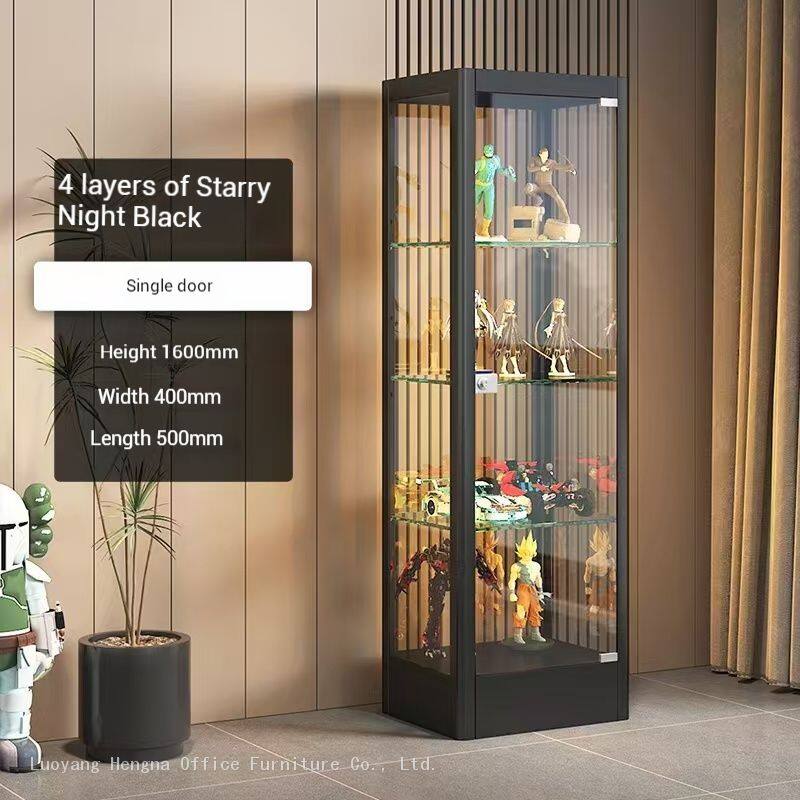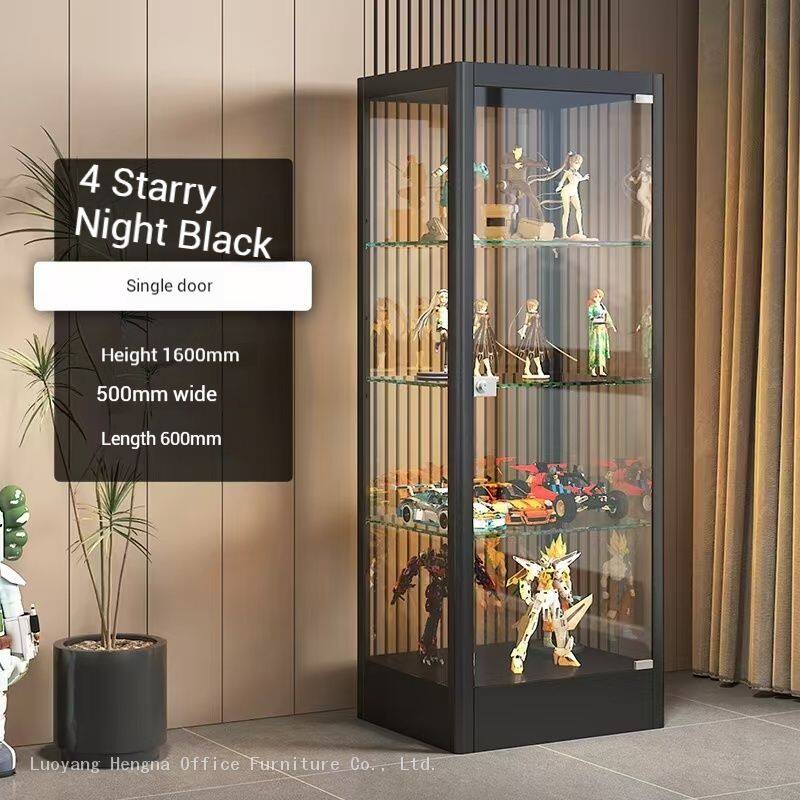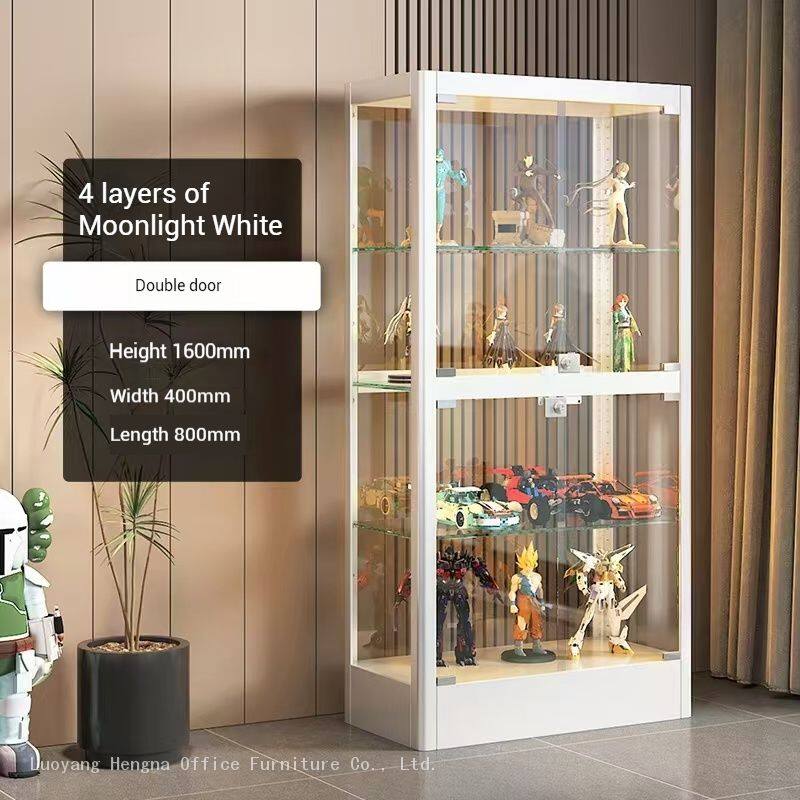-
 Sarah
Hi there! Welcome to my shop. Let me know if you have any questions.
Sarah
Hi there! Welcome to my shop. Let me know if you have any questions.
Your message has exceeded the limit.

Gallery-Grade Display Cabinets: Showcasing Artwork with Optimal Lighting & Security
2025-10-31 08:48:28
Art galleries serve as critical bridges between artists and audiences, where the presentation of artwork can significantly influence perception, appreciation, and sales. Gallery-grade display cabinets represent sophisticated solutions that balance the competing demands of artwork preservation, optimal presentation, and security requirements. This comprehensive exploration examines how galleries can leverage specialized display solutions to enhance artwork presentation, protect valuable pieces, and create engaging visitor experiences that support artistic and commercial objectives.
 The Intersection of Art Preservation and Presentation Art display requires careful consideration of both preservation requirements and presentation aesthetics. Gallery-grade display cabinets must create environments that protect artwork from environmental damage while providing optimal viewing conditions for visitors. The balance between these competing demands requires sophisticated engineering and materials science to achieve optimal results. Environmental control systems within display cabinets must maintain stable conditions that prevent artwork deterioration. Temperature control prevents thermal stress that can damage paintings, sculptures, and mixed media works. Humidity control protects organic materials from moisture-related damage while preventing metal corrosion. The integration of these systems must be virtually invisible to maintain focus on the artwork itself. Advanced Lighting Technology for Art Presentation Lighting represents one of the most critical elements in art display, significantly impacting how artwork is perceived and experienced. Gallery-grade display cabinets incorporate sophisticated lighting systems that provide optimal illumination without causing damage. LED technology has become the industry standard due to its low heat output, energy efficiency, and superior color rendering capabilities. The careful calibration of lighting levels is essential for different artwork types, with paintings requiring different illumination than sculptures or textiles. Color temperature selection ensures accurate color representation while creating appropriate viewing atmospheres. Advanced lighting systems incorporate UV filtering to prevent pigment fading and material degradation over time. Security Systems for Valuable Artwork Art galleries face significant security challenges, with displayed pieces often representing substantial financial and cultural value. Gallery-grade display cabinets incorporate multi-layered security systems including high-security locking mechanisms, tamper-resistant construction, and integrated alarm systems. The use of specialized security glass provides protection against forced entry while maintaining optimal visibility for artwork appreciation. Advanced security features include vibration sensors that detect potential impacts, pressure sensors that monitor cabinet integrity, and infrared sensors that detect unauthorized access attempts. The integration of these systems with comprehensive gallery security infrastructure creates overlapping layers of protection. Some display cabinets incorporate GPS tracking and RFID technology that can monitor artwork location and movement within gallery spaces.
The Intersection of Art Preservation and Presentation Art display requires careful consideration of both preservation requirements and presentation aesthetics. Gallery-grade display cabinets must create environments that protect artwork from environmental damage while providing optimal viewing conditions for visitors. The balance between these competing demands requires sophisticated engineering and materials science to achieve optimal results. Environmental control systems within display cabinets must maintain stable conditions that prevent artwork deterioration. Temperature control prevents thermal stress that can damage paintings, sculptures, and mixed media works. Humidity control protects organic materials from moisture-related damage while preventing metal corrosion. The integration of these systems must be virtually invisible to maintain focus on the artwork itself. Advanced Lighting Technology for Art Presentation Lighting represents one of the most critical elements in art display, significantly impacting how artwork is perceived and experienced. Gallery-grade display cabinets incorporate sophisticated lighting systems that provide optimal illumination without causing damage. LED technology has become the industry standard due to its low heat output, energy efficiency, and superior color rendering capabilities. The careful calibration of lighting levels is essential for different artwork types, with paintings requiring different illumination than sculptures or textiles. Color temperature selection ensures accurate color representation while creating appropriate viewing atmospheres. Advanced lighting systems incorporate UV filtering to prevent pigment fading and material degradation over time. Security Systems for Valuable Artwork Art galleries face significant security challenges, with displayed pieces often representing substantial financial and cultural value. Gallery-grade display cabinets incorporate multi-layered security systems including high-security locking mechanisms, tamper-resistant construction, and integrated alarm systems. The use of specialized security glass provides protection against forced entry while maintaining optimal visibility for artwork appreciation. Advanced security features include vibration sensors that detect potential impacts, pressure sensors that monitor cabinet integrity, and infrared sensors that detect unauthorized access attempts. The integration of these systems with comprehensive gallery security infrastructure creates overlapping layers of protection. Some display cabinets incorporate GPS tracking and RFID technology that can monitor artwork location and movement within gallery spaces. Material Selection and Conservation Standards The materials used in gallery display cabinet construction must meet stringent conservation standards to prevent potential artwork damage. All materials must be chemically stable and free from harmful emissions that could accelerate artwork deterioration. The use of archival-quality materials, including acid-free woods, powder-coated metals, and conservation-grade seals, ensures long-term artwork protection. Glass selection represents another critical consideration, with options including low-iron glass for true color reproduction, anti-reflective coatings for enhanced visibility, and UV-filtering properties for additional protection. The careful selection and testing of all construction materials prevents potential chemical reactions that could damage artwork over time, ensuring that display cabinets contribute to rather than compromise conservation efforts. Customization for Different Art Mediums Different art forms require specialized display solutions tailored to their unique conservation and presentation needs. Painting display cabinets must accommodate various frame sizes and provide optimal lighting conditions that enhance color and texture without causing glare. Sculpture displays may require specialized mounting systems that provide support while minimizing contact with artwork surfaces. Textile and fiber art displays need particular attention to environmental control and mounting techniques that prevent stress on delicate materials. Photography displays require specialized lighting that prevents fading while maintaining accurate color representation. The development of customized display solutions requires collaboration between conservators, curators, and display engineers to create solutions that meet both conservation and presentation requirements. Visitor Experience and Educational Value Gallery display cabinets must enhance visitor experience while maintaining artwork protection. Optimal glass clarity and minimal reflection ensure that artwork can be viewed without distortion or visual interference. Thoughtful cabinet design considers viewing heights, angles, and distances to accommodate visitors of various ages and physical abilities. Interactive elements can be integrated into display cabinet designs to enhance educational value without compromising conservation requirements. Touch screens, augmented reality displays, and audio guides can provide additional context and information while maintaining appropriate distance from artwork. These technological enhancements create engaging experiences that deepen visitor understanding and appreciation of artistic works.
Material Selection and Conservation Standards The materials used in gallery display cabinet construction must meet stringent conservation standards to prevent potential artwork damage. All materials must be chemically stable and free from harmful emissions that could accelerate artwork deterioration. The use of archival-quality materials, including acid-free woods, powder-coated metals, and conservation-grade seals, ensures long-term artwork protection. Glass selection represents another critical consideration, with options including low-iron glass for true color reproduction, anti-reflective coatings for enhanced visibility, and UV-filtering properties for additional protection. The careful selection and testing of all construction materials prevents potential chemical reactions that could damage artwork over time, ensuring that display cabinets contribute to rather than compromise conservation efforts. Customization for Different Art Mediums Different art forms require specialized display solutions tailored to their unique conservation and presentation needs. Painting display cabinets must accommodate various frame sizes and provide optimal lighting conditions that enhance color and texture without causing glare. Sculpture displays may require specialized mounting systems that provide support while minimizing contact with artwork surfaces. Textile and fiber art displays need particular attention to environmental control and mounting techniques that prevent stress on delicate materials. Photography displays require specialized lighting that prevents fading while maintaining accurate color representation. The development of customized display solutions requires collaboration between conservators, curators, and display engineers to create solutions that meet both conservation and presentation requirements. Visitor Experience and Educational Value Gallery display cabinets must enhance visitor experience while maintaining artwork protection. Optimal glass clarity and minimal reflection ensure that artwork can be viewed without distortion or visual interference. Thoughtful cabinet design considers viewing heights, angles, and distances to accommodate visitors of various ages and physical abilities. Interactive elements can be integrated into display cabinet designs to enhance educational value without compromising conservation requirements. Touch screens, augmented reality displays, and audio guides can provide additional context and information while maintaining appropriate distance from artwork. These technological enhancements create engaging experiences that deepen visitor understanding and appreciation of artistic works. Integration with Gallery Operations Modern gallery display solutions increasingly integrate with operational systems to enhance efficiency and visitor management. Inventory tracking capabilities help curators monitor artwork locations and condition, facilitating collection management and insurance documentation. Some systems incorporate environmental monitoring that provides real-time data on display conditions and alerts for potential conservation issues. The integration of display cabinets with ticketing systems and visitor analytics helps galleries understand visitor behavior patterns and optimize display layouts. Advanced systems may include crowd monitoring capabilities that adjust lighting or provide additional information during peak visiting periods. These operational integrations create more efficient gallery management and enhanced visitor experiences. Future Trends in Gallery Display Technology The evolution of gallery display technology continues to advance, with new innovations enhancing both conservation capabilities and visitor engagement. Smart display systems with predictive environmental monitoring can anticipate potential conservation issues before they impact artwork. Integrated augmented reality technologies can provide additional layers of interpretation without physical interaction with artwork. Sustainability considerations are increasingly influencing display cabinet design, with energy-efficient lighting systems and environmentally friendly materials becoming standard features. The integration of virtual gallery experiences with physical displays creates hybrid exhibition models that extend artistic reach beyond physical gallery spaces. These technological advances promise to enhance the effectiveness and accessibility of gallery exhibitions.
Integration with Gallery Operations Modern gallery display solutions increasingly integrate with operational systems to enhance efficiency and visitor management. Inventory tracking capabilities help curators monitor artwork locations and condition, facilitating collection management and insurance documentation. Some systems incorporate environmental monitoring that provides real-time data on display conditions and alerts for potential conservation issues. The integration of display cabinets with ticketing systems and visitor analytics helps galleries understand visitor behavior patterns and optimize display layouts. Advanced systems may include crowd monitoring capabilities that adjust lighting or provide additional information during peak visiting periods. These operational integrations create more efficient gallery management and enhanced visitor experiences. Future Trends in Gallery Display Technology The evolution of gallery display technology continues to advance, with new innovations enhancing both conservation capabilities and visitor engagement. Smart display systems with predictive environmental monitoring can anticipate potential conservation issues before they impact artwork. Integrated augmented reality technologies can provide additional layers of interpretation without physical interaction with artwork. Sustainability considerations are increasingly influencing display cabinet design, with energy-efficient lighting systems and environmentally friendly materials becoming standard features. The integration of virtual gallery experiences with physical displays creates hybrid exhibition models that extend artistic reach beyond physical gallery spaces. These technological advances promise to enhance the effectiveness and accessibility of gallery exhibitions.

Tags: Gallery-Grade Display Cabinets, Showcasing Artwork, Optimal Lighting & Security

